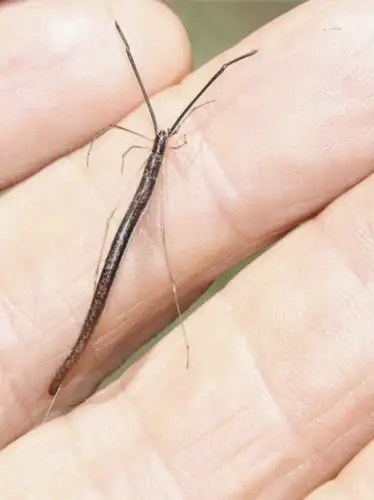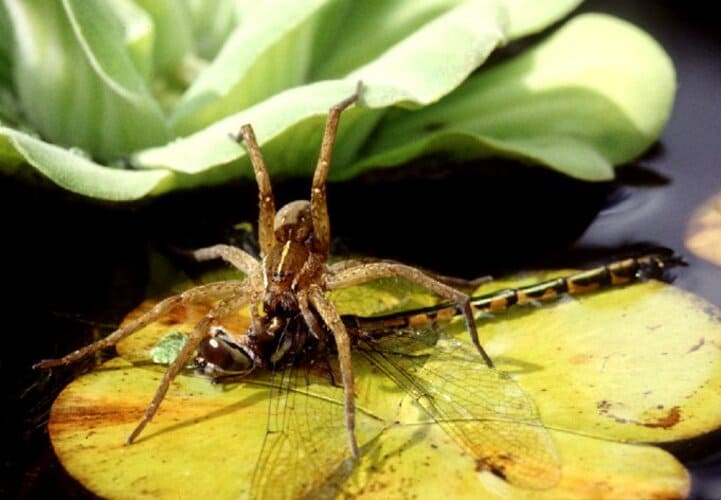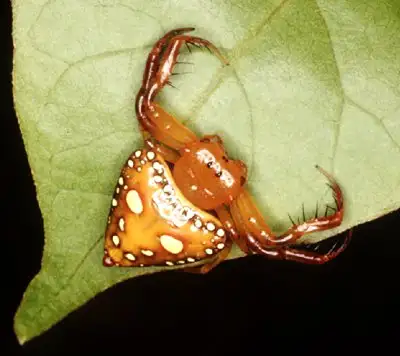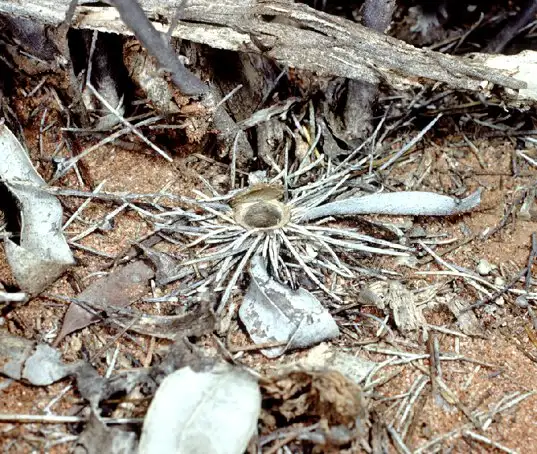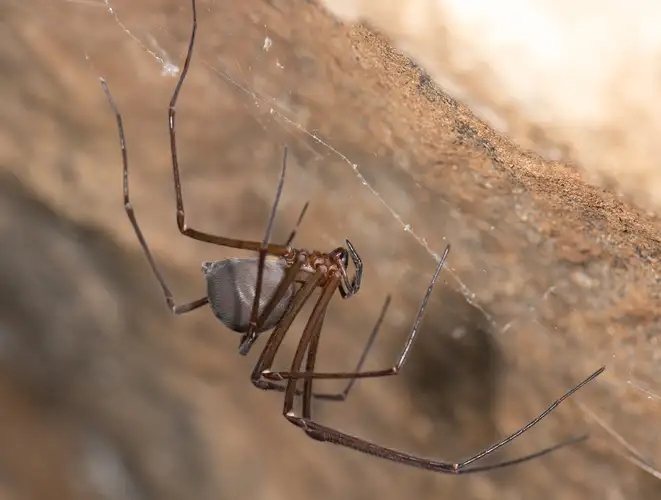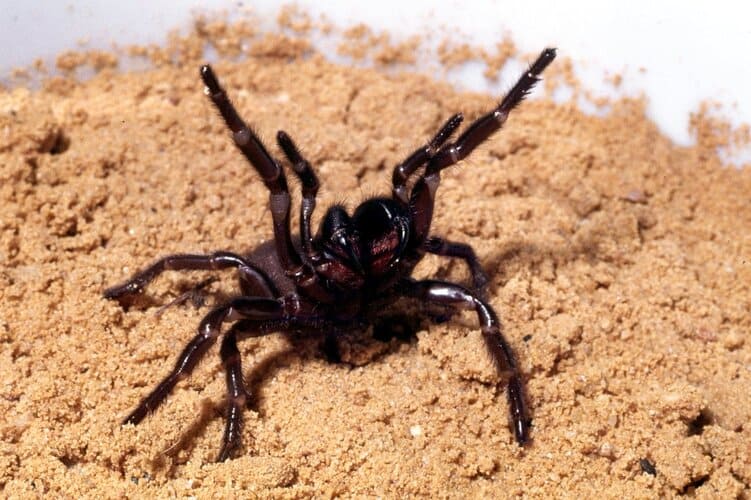Whip Spider / Tailless Whip Scorpion
IUCN
LCBasic Information
Scientific classification
- name:Whip Spider / Tailless Whip Scorpion
- Scientific Name:Order Amblypygi (whip spiders / tailless whip scorpions)
- Outline:Arthropoda
- Family:Amblypygi Whip spiders
Vital signs
- length:Most species have a body length of about 2–5 cm, with the largest reaching over 6–7 cm
- Weight:From a few grams to more than ten grams depending on species and size, with a flattened, lightweight build
- lifetime:Estimated life span of several years; some species may live 3–5 years or longer under favourable conditions
Feature
Flattened nocturnal arachnids with extremely long whiplike front legs used as sensory feelers; fearsome-looking but essentially harmless to humans.
Distribution and Habitat
Tropical and subtropical forests, caves, rock crevices and ruins worldwide, in dark, humid and sheltered microhabitats.
Appearance
Broad, flat body in brown or grey-brown tones; first pair of legs elongated like whips, spined pedipalps used to grasp prey, overall resembling a tailless, flat scorpion.
Details
Whip spiders, also known as tailless whip scorpions, belong to the arachnid orderAmblypygi. Despite the English name they are neither true spiders nor scorpions, but close relatives of both. They are instantly recognisable by their extremely long, whiplike front legs and flattened bodies, adapted for life in crevices and on cave and forest walls.
Taxonomy & Names
Common English names: Whip Spider, Tailless Whip Scorpion
Scientific group name: Order Amblypygi
Class: Arachnida (arachnids)
Appearance
Whip spiders have a striking and somewhat intimidating appearance:
Body size: most species have a body length of about 2–5 cm, with the largest reaching 6–7 cm or more;
Flattened body: the body is broad and very flat, allowing the animal to squeeze into narrow cracks;
Whiplike front legs: the first pair of legs is greatly elongated and thin and no longer used for walking. Instead they function as highly sensitive “feelers” that can reach far around the animal;
Raptorial pedipalps: the pedipalps and second pair of legs are thick and spined, forming grasping arms used to seize and hold prey;
No tail or sting: unlike true scorpions, whip spiders have no tail and no stinger, which is why they are called tailless whip scorpions.
Their colours are typically brown, grey-brown or dark mottled shades that help them blend into rock, bark or cave walls.
Distribution & Habitat
Whip spiders are found mainly in tropical and subtropical regions around the world, including:
Central and South American rainforests and limestone caves;
African forests and cave systems, including Madagascar;
Southeast Asian and some South Asian mountain rainforests and caves;
Occasionally in drier regions where suitable rock crevices and ruins are available.
They prefer dark, humid and sheltered microhabitats and spend the day hidden in cracks, behind bark or on cave ceilings, emerging mostly at night.
Behaviour & Hunting
Whip spiders are nocturnal ambush predators:
By day they remain motionless, pressed flat against rock or wood, relying on camouflage;
At night they extend their long, whiplike front legs and slowly sweep them through the air and over the substrate, detecting obstacles, prey and potential threats;
When an insect or other arthropod approaches, the whip spider strikes quickly, using its spined pedipalps and front legs to grab and pin the prey before biting and feeding.
Their diet includes cockroaches, crickets, moths, beetles and other spiders, making them valuable natural predators in caves, ruins and forest habitats.
Senses & Social Behaviour
Vision in many species is limited, but their elongated front legs and body sensory hairs are extremely sensitive:
They can detect tiny air movements and surface vibrations, helping them navigate and hunt in the dark;
In some species, these sensory legs are also used in communication between individuals, especially during courtship and territorial interactions;
Certain whip spiders show some degree of parental care, with females carrying newly hatched young on their backs for a time before they disperse.
Venom & Human Significance
Although whip spiders look fearsome, they are not dangerous to humans:
They have no venomous sting and are not known to possess medically significant venom like some spiders;
If handled roughly they may pinch with their spined pedipalps or attempt to bite, causing brief mechanical pain at most;
They do not actively attack humans and prefer to retreat into cracks when disturbed.
In some regions people appreciate whip spiders as natural “cockroach hunters” in old buildings and caves.
Conservation & Relationship with People
Many whip spiders are secretive and localised, and some species may be affected by habitat loss, cave tourism, deforestation and urban development.
Conservation-friendly actions include:
Protecting native forests and cave ecosystems from overuse and pollution;
Managing tourism in caves to preserve dark, humid microhabitats;
Educating the public that whip spiders, though striking in appearance, are basically harmless and ecologically valuable.
FAQ
Q1. Are whip spiders real spiders?
No. Whip spiders belong to the order Amblypygi, which is separate from true spiders (order Araneae) and from scorpions,
though all are arachnids.
Q2. Do whip spiders have venom or a sting?
They have no tail and no sting, and are not known for medically important venom. They rely mainly on strength and their
spined pedipalps to subdue insect prey.
Q3. Are whip spiders dangerous to humans?
They are generally considered harmless. At most they may pinch or give a minor bite if handled, causing brief pain but
rarely more than that.
Q4. What should I do if I find a whip spider in a cave or old building?
In most cases it is best simply to leave it where it is. If you need to move it, gently place it in a container and relocate
it to a nearby sheltered spot, avoiding unnecessary killing of these useful predators.

